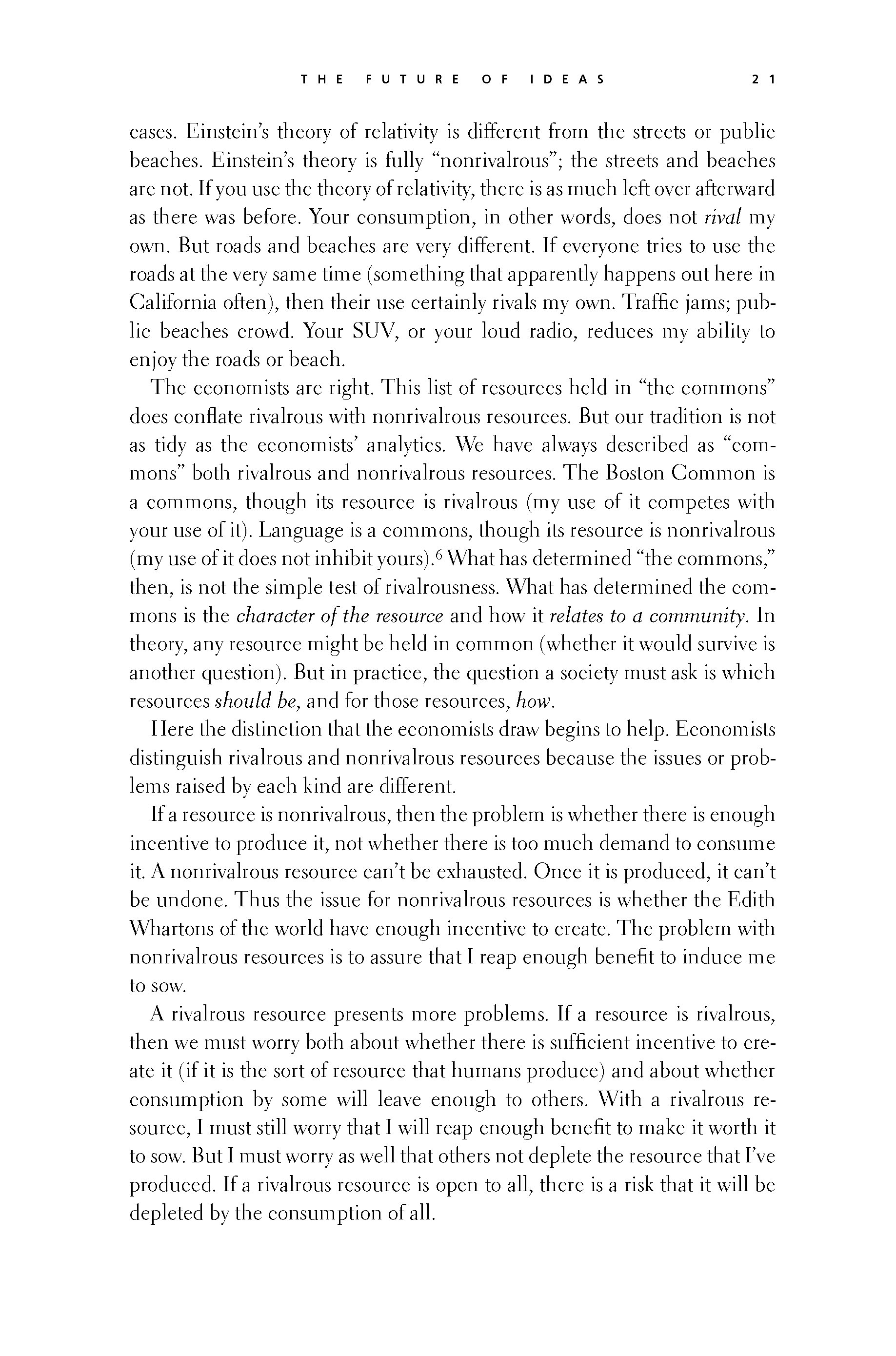 p020 _
-chap- _
toc-1 _
p021w _
toc-2 _
+chap+ _
p022
p020 _
-chap- _
toc-1 _
p021w _
toc-2 _
+chap+ _
p022
cases. Einstein's theory of relativity is different from the streets or public
beaches. Einstein's theory is fully "nonrivalrous"; the streets and beaches
are not. If you use the theory of relativity, there is as much left over afterward
as there was before. Your consumption, in other words, does not _rival_ my
own. But roads and beaches are very different. If everyone tries to use the
roads at the very same time (something that apparently happens out here in
California often), then their use certainly rivals my own. Traffic jams; pub-
lic beaches crowd. Your SUV, or your loud radio, reduces my ability to
enjoy the roads or beach.
The economists are right. This list of resources held in "the commons"
does conflate rivalrous with nonrivalrous resources. But our tradition is not
as tidy as the economists' analytics. We have always described as "com-
mons" both rivalrous and nonrivalrous resources. The Boston Common is
a commons, though its resource is rivalrous (my use of it competes with
your use of it). Language is a commons, though its resource is nonrivalrous
(my use of it does not inhibit yours).[2-6] What has determined "the commons,"
then, is not the simple test of rivalrousness. What has determined the com-
mons is the _character_of_the_resource_ and how it _relates_to_a_community_. In
theory, any resource might be held in common (whether it would survive is
another question). But in practice, the question a society must ask is which
resources _should_be,_ and for those resources, _how_.
Here the distinction that the economists draw begins to help. Economists
distinguish rivalrous and nonrivalrous resources because the issues or prob-
lems raised by each kind are different.
If a resource is nonrivalrous, then the problem is whether there is enough
incentive to produce it, not whether there is too much demand to consume
it. A nonrivalrous resource can't be exhausted. Once it is produced, it can't
be undone. Thus the issue for nonrivalrous resources is whether the Edith
Whartons of the world have enough incentive to create. The problem with
nonrivalrous resources is to assure that I reap enough benefit to induce me
to sow.
A rivalrous resource presents more problems. If a resource is rivalrous,
then we must worry both about whether there is sufficient incentive to cre-
ate it (if it is the sort of resource that humans produce) and about whether
consumption by some will leave enough to others. With a rivalrous re-
source, I must still worry that I will reap enough benefit to make it worth it
to sow. But I must worry as well that others not deplete the resource that I've
produced. If a rivalrous resource is open to all, there is a risk that it will be
depleted by the consumption of all.
[[21]]
p020 _
-chap- _
toc-1 _
p021w _
toc-2 _
+chap+ _
p022